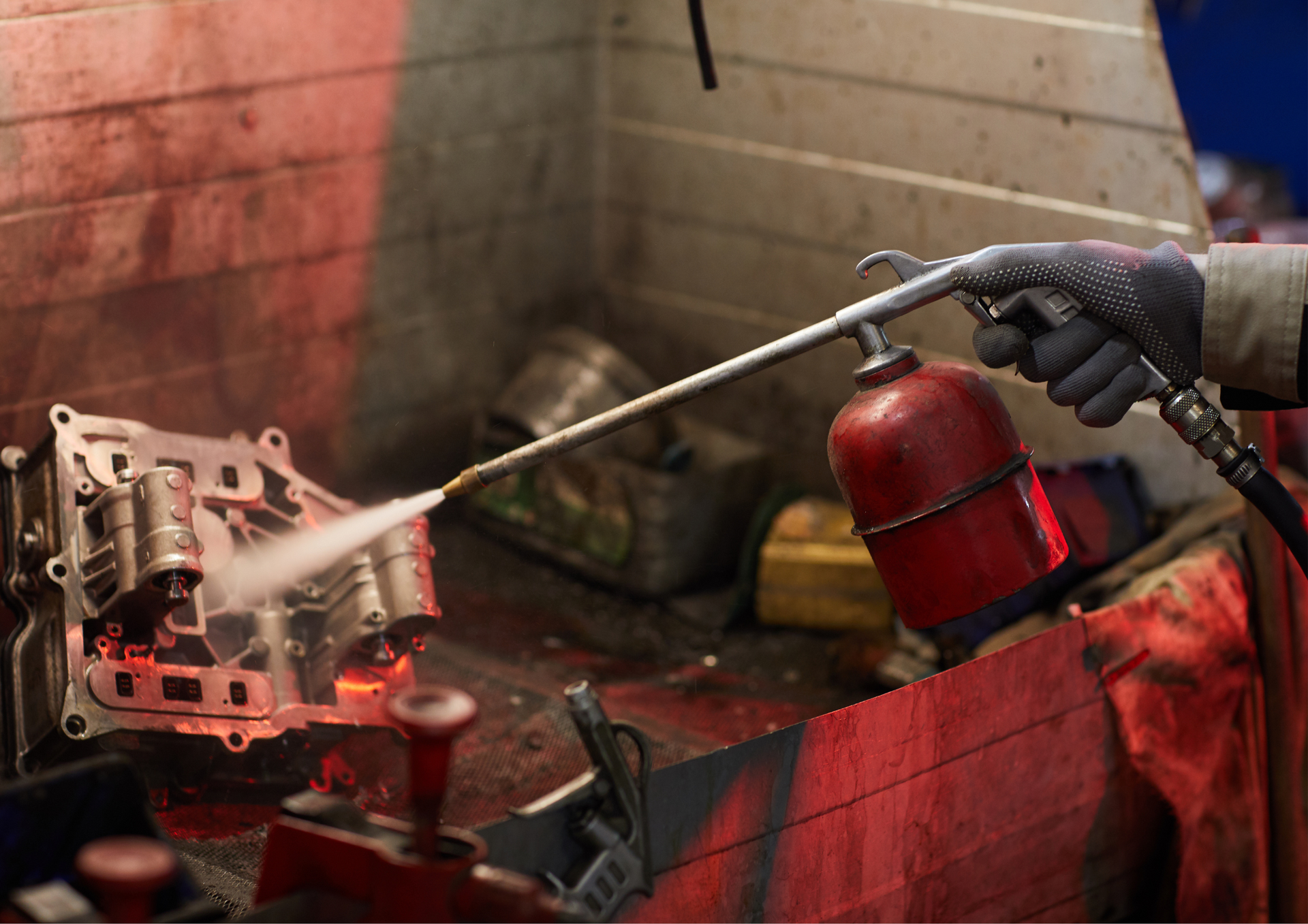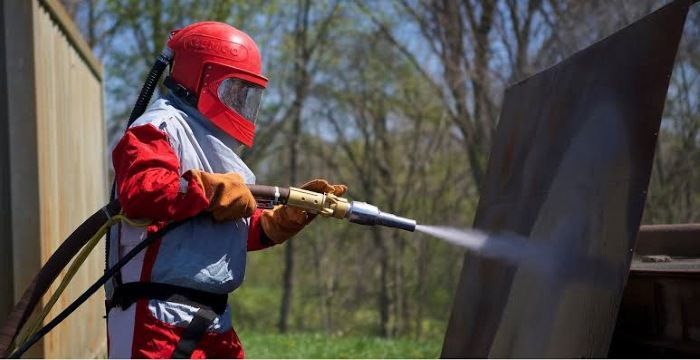How to Prepare Concrete Surfaces Properly Before Sandblasting
Sandblasting concrete is an effective method for cleaning, resurfacing, or preparing surfaces for coatings and sealants. However, achieving the best results requires proper preparation. Whether you work in construction, automotive manufacturing, marine shipbuilding, or restoration, understanding how to prepare your concrete surface is essential. Preparing correctly not only enhances the appearance of the final finish but also ensures the longevity of the concrete.
Before any sandblasting begins, it’s crucial to assess the condition of the concrete. Skipping preparation can lead to uneven results, surface damage, or increased costs in the long term.
In this guide, we’ll cover all the steps you need to take to get your concrete ready for sandblasting.
Understanding Your Concrete Surface
The first step in preparing for sandblasting is understanding the type and condition of your concrete. Different concrete surfaces, from freshly poured slabs to older, weathered structures, react differently under sandblasting. Inspect the surface for cracks, chips, spalling, or previous coatings.
Older concrete may require more thorough preparation to ensure that sandblasting removes contaminants without damaging the surface. For restoration projects, such as refurbishing historical structures or concrete sculptures, a careful assessment prevents unnecessary erosion or surface degradation. By knowing your concrete’s condition, you can choose the correct blasting pressure and abrasives for the best outcome.
Cleaning the Surface
Before sandblasting, the concrete must be clean. Dirt, grease, oils, or other debris can affect how evenly the abrasive material removes surface layers. Cleaning may involve pressure washing, scrubbing with appropriate detergents, or using specialised degreasers for industrial environments.
A clean surface ensures that the abrasive particles can work effectively, revealing a consistent texture. This step is particularly important if you are working on a sandblasting concrete driveway, where the appearance and uniformity of the surface matter both for aesthetics and safety. Proper cleaning also reduces dust and improves visibility during the blasting process.
Protecting Surrounding Areas
Sandblasting generates debris and dust, which can cause damage if not controlled. Surrounding areas such as plants, walls, vehicles, or equipment should be protected using tarps, masking materials, or temporary barriers.
Taking precautions ensures that the operation is safe for both operators and the environment. Industrial settings, like metal fabrication shops or marine shipyards, often require additional protective measures to prevent contamination of nearby equipment or materials. By carefully controlling the workspace, you reduce the risk of accidents and minimise post-blasting cleanup.
Repairing Surface Imperfections
Any cracks, chips, or holes should be addressed before sandblasting. Small repairs can be filled with suitable patching compounds to create a smooth, uniform surface. This ensures that the blasting process removes only the intended layers without enlarging imperfections or creating uneven textures.
Repairing beforehand is also crucial for achieving a high-quality sandblasted concrete finish. Whether for industrial applications or aesthetic purposes, a smooth, consistent finish relies on starting with a surface free of defects that could compromise the final result.
Safety Precautions and Equipment Check
Ensuring safety is essential before starting any sandblasting project. Proper preparation protects both the operator and the concrete surface.
Key steps include:
- Wear appropriate PPE: Use respirators, gloves, eye protection, and protective clothing.
- Ensure proper ventilation: Especially important in enclosed spaces to control dust and maintain air quality.
- Inspect equipment: Check hoses, nozzles, and abrasive media to prevent malfunctions.
- Follow operational protocols: Use the equipment as recommended to avoid damage or injury.
Considering Costs and Planning
Understanding the cost to sandblast concrete is an important part of preparation. Costs can vary depending on surface size, condition, location, and the type of abrasive used. Planning ahead allows for realistic budgeting and prevents unexpected delays during the project.
Industrial clients, like those in oil and gas or automotive manufacturing, often plan multiple phases for large-scale sandblasting. By estimating costs early, it’s possible to schedule equipment, staff, and resources effectively, ensuring smooth operations and predictable results.
Optional: Sand Blast Concrete Techniques
There are different sandblasting methods depending on the surface and desired outcome. While this guide focuses on preparation, knowing the techniques can influence how you prep the surface. Techniques vary in abrasive type, particle size, and pressure.
For instance, fine abrasives create smoother finishes, ideal for decorative or restoration projects, while coarse abrasives remove tough coatings or heavily contaminated concrete. Considering your preferred sand blast concrete technique during preparation ensures compatibility between surface condition and blasting method.
Proper preparation is the cornerstone of successful
sandblasting concrete. From assessing the surface and cleaning to repairing imperfections and implementing safety measures, each step ensures a consistent, durable, and visually appealing finish. Skipping these steps can result in poor outcomes, increased costs, and safety hazards.
By following the steps outlined in this guide, you can achieve a professional, high-quality sandblasted concrete finish, whether you are restoring historical structures, preparing industrial floors, or cleaning decorative surfaces.
At
Sandblasting Specialist, we bring years of experience across construction, automotive manufacturing, marine shipbuilding, oil and gas, metal fabrication, and restoration projects. Our team prioritises safety, efficiency, and high-quality results.
We understand the intricacies of sandblasting concrete and take every measure to ensure each project meets the highest standards. Clients rely on us for dependable, professional service, whether for large industrial operations or precise work on delicate surfaces.
Don’t miss it on X:
Sandblasting concrete – steps to prepare your surfaces correctly!



